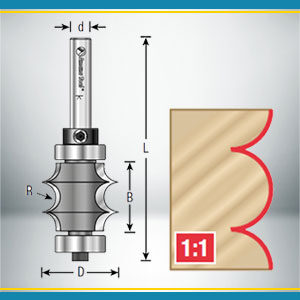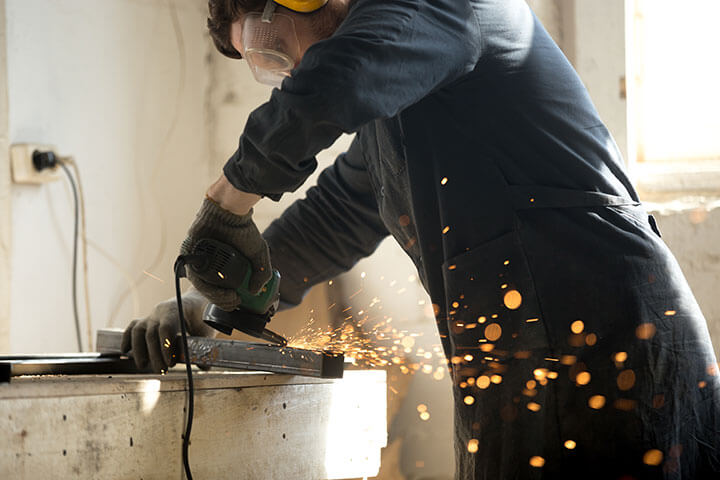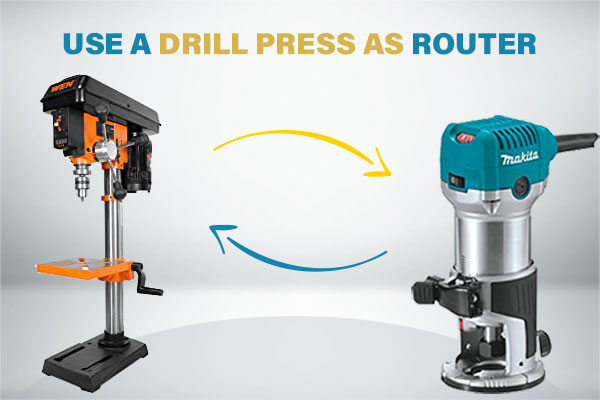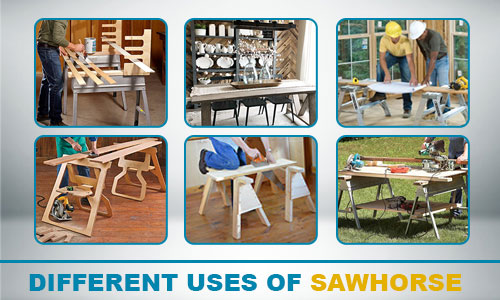30+ Router Bit Profiles Every Woodworker and Carpenter Should Know
Woodworking tool router has a great demand in carpentry and one of the most used woodworking tools. This tool cannot operate without router bits, which are workshop staples and used to shape wood edges, create joinery of wood, and make grooves into the center of the wood. More than a hundred types of router bit profiles are designed to do different kinds of works. If you are failed to pick the right router bit for your work, you won’t be able to get the proper cut, and you can’t finish the job successfully. So sorting router bit is very cumbersome work. Here is a list of some router bit profiles commonly used for woodworking projects and different types of carpentry work.
According to the purpose of the work, we can divide them into three fundamental sections, and they are grooving router bit profiles, joinery router bit profiles and edge shaping router bit profiles.
Grooving Router Bit Profiles
Grooving bits are those used to make a groove or a notch in a working piece. Groove is a slot cut used in many woodworking fields like cabinetry making, frame and panel making in construction, roofing, flooring, siding, etc. A groove can be cut with an electric router and a circular saw, hand saw and spindle molder.
Straight Bits

The straight router bit is one of the most used router bits and very common and helpful in carpentry work. These bits can do a variety of jobs because of their versatile quality. They have a variety of cut diameters and their shank size may vary from ¼ inches to ½ inches, and their blade diameters come with a range from 1/16 inches to 1 and ½ inches.
Straight bits have been used to form a groove, a dado, and a mortising door or something like that. These bits are also used for decorative inlays, which means decoration technically to create visual art.
V-Groove Bits

V-groove router bits are used to make V-shaped grooves in our workpiece. A V-shaped groove can also be made with a chamfer bit profile. However, the angles of the V-groove router bit profile may vary from 15° to 160°. The width of the v section can range from 9.5mm to 76mm. The diameter of the bit’s shank may also vary from 3/8 inches to 8mm.
V-grooves router bits are instrumental in design making. With a v-groove bit, a flat and normal wood surface can appear with beautiful and eye-catching designs. The whiteside V-groove bits are excellent for carving high quality signs and stand as a taste of time, and customizable according to our preferable color, text, and placement. V-groove bits is another achievement in bead-board that is a style of decorative wall paneling and extolled worldwide. These bits are also used for architectural work like fluting columns and fluted columns in the Nasir-ol-molk Mosque in Iran.
Round Nose Bits

The round nose router bit is almost analogous to the cove router bit (below), as both create a hollow circle profile. Round nose bits are designed to make a concave groove on the middle of the piece of wood. The overall lengths of these bits range from 1 inch to 4 inches, and the cutting diameter varies from ¼ inches to 2 inches and the cutting length or height of cut from 5/6 inches to 1 inch.
These bits are used for cutting circular channels on the pipe and produce flutes in solid wood.
Ball End Router Bits

These Bits are groove router bits designed to cut circular or ball-shaped profiles on pipes or cables. ½, ¼, 3/8 and 5/16 inches are multiple radiuses of ball end router bit.
Bowl and Tray Router Bits

Bowl and tray router bits are grooving bit profiles used to make dishes, bowls, trays, boxes and carve out the inside of a workpiece. These router bits served the best when why where they used them with a plunge router.
Core Box Router Bits

These grooving bits are used to create semi-circular bottom notches on the flat surface. It can use for moldings, fluting, veining, grooving, columns, millworks where a round bottom groove is required. Core box router bits are available in several sizes, such as ½ and ¼ inch diameter core box router bits.
Nova System Insert Router Bits

Nova system insert bit is a replaceable router bit profile that gives a different range of profile options in a single bit. These bits are used to make knife holders and insertion space for knives and kitchen boards as well. Nova system insert router bits can be used to make quick replacements of dull knives and make the blades re-sharpen without causing any effect on the original profile. The overall length of the nova system insert router bit is 5/8 inches to 2 inches, and the diameter comes in ranging from 11/32 inches to 1 inch.
Joinery Router Bit Profiles
Joinery bits are significant in woodwork as they are used to make durable joints and make the furniture good-looking. Joinery is a process through which several pieces of wood get connected, and it is an essential part of the woodwork. Usually, joinery is used in furniture, doors and windows, flooring, closets, cabinetry, etc. In construction projects, joineries have been significantly used. The person who used to make joints is called a joiner.
Dovetail Router Bits

The dovetail router bit is famous for creating dovetail joinery, which is the hallmark of the woodwork. Making dado cut and rabbet cut is also possible with a dovetail bit profile. These router bits create mellifluous and intricate joints, and also, these bits are routable on softwood, hardwood, plywood and any other compound material. With a jig and template, a dovetail bit can make an excellent cut for joinery. The diameter of the dovetail bit may come in a variety of forms from ¼ inches to 3/8 inches, and the cut length may vary from ¼ inches – 1 inch; angles of dovetail cutters spread from 95 degrees to 110 degrees.
There are different types of dovetail router bit profiles, and each of them has quest and usance. These are dovetail or plain dovetail, half-blind dovetail, secret mitered dovetail, secret double lapped dovetail, sliding dovetail.
Dovetail joinery is very famous among artisans and joinery work and most commonly used in woodwork, like creating compact joints of a drawer front to sides. Dovetail joinery is used to join shelves and cabinet sides, cabinet bottoms and sides, horizontal partitions, and enter the neck and body of a violin and guitar.
Dado Router Bits

Dado bits are essential to make a dado joint, a notch or a groove cut into the surface of a workpiece. It is a joinery bit used to create a square or rectangular shaped strongest woodworking joints. Besides the wood router, a table saw is also capable of cutting dado. Blades of dado are usually 8 inches in diameter, but the diameter can also be 6 inches and 7 inches, and the cutters are 1/8 inches to 3/32 inches thick. Besides making dado joints, a dado bit can make rabbet joint, half lap joints and tongue groove.
Dado is a joinery cut mainly used to attach two pieces of wood and make a strong joint. Through dado or both ends open dado; blind or stopped dado which is contained before meeting edge of the workpiece and half dado that have a dado in one part and a rabbet in another position; are some variations of dado profile. But all kinds of dado have only one purpose: joining pieces of wood and building different types of lading.
Rabbet Router Bits

Rabbet bits helped make rabbet cuts on the edge of the workpiece and formed an L-shaped shoulder joint. The circular pilot bearing at the top of the bit controls the width of the cut as a smaller bearing is responsible for the broader cut. The diameter of the bearing ranging from 1 ¼ inch to 13/8 inches, and the shank size comes in ½ inches to ¼ inches.
Rabbet bits are most commonly used in carpentry, and it is essential in construction work like making drawers, cabinets and forming a joint between two pieces of wood. The profile has also appeal in half-lap or shiplap planking and doors and windows.
Flush Trim Bits

Flush trim router bits are kind of straight bits with a pilot bearing on their top and have the same diameter as straight bits. They have been used as a trimming laminate, duplicating curved patterns and to joint edges smoothly. For building cabinets, cabinet doors, tabletops, drawer faces, these router bit profiles are helpful.
Edge Shaping or Edge Forming Router Bits
The last one among three fundamental sections that router bits are designed to serve, and edge-forming bits’ are the most used router bits. Edge forming or shaping the edges is vital for the woodworking process, especially for furniture making. Edge forming bits’ main action is to hatch beautiful skirts and turn flat, sharp and general edges into many stylist and designer edges.
Beading Router Bits

Beading bit profiles ability is to turn a sharp edge of the stock into a rounded shaped edge. They are almost similar to round over bit because both of them can turn the sharp edge of a workpiece into the contest. Beading router bits come with different profiles like corner beading router bit, which is used for shaping the corner of the stock, edge beading router bit, which main work is to make shape the edge of the stock. Beading bits come in different radiuses, and the radius size can be 1/16 inches, 3/16 inches, 7/16 inches, 1/8 inches, 3/8 inches, ¼ inches, ½ inches and 1 inch, and the shank of the beading bits may vary from ¼ inches to ½ inches.
Edge beading router bits’ ability to make the creative decoration is easier and faster than any other router bits. Finishing flat surfaces or edges on stairs or other wooden pieces is the main task of edge beading router bit.
Chamfer Bits

Chamfer bits are most commonly used as edging bits which produces an angled slope on the edge of the wood and makes the edge attractive. You can make it with a table saw, but it may leave ugly saw marks and burn marks on the cutting place, while with a router, you may get tremendous clean cuts by using a chamfer bit. Chamfer bits can create several chamfers with different sizes as they come in various sizes ranging from 1/8 inches to 2 ½ inches. The angles of chamfer bits may vary from 7 degrees to 45 degrees. Some chamfer bits have a bearing on their top, which spins along the edge of the stock.
Chamfer bits make steepy edges on tabletops, counter edges, flat edges and build construction boxes’ edges, especially multi-sided boxes. Chamfer bit profile has a massive territory of use in carpentry, furniture, mirrors, machining and concrete formwork. Besides creating decorative edges, a chamfer bit is also used to join two pieces of mitered material. Chamfers are also used in architectural plans. Saks Fifth Avenue in New York is an excellent example of chamfer use. Also, the construction of the Taj Mahal, including its beautiful gate, is a vast model of chamfer where chamfer-based stones, chamfered corners and chamfered corbels have been used.
Cove Bits

A cove bit profile is intended to make a hollow quarter-rounded profile used for decorative purposes to make the edges of tables, window seals, and choky and transform furniture from simple appearance to elegant and beautiful. Cove profiles are also used to build moldings. Besides forming decorative edges, this profile is used with the round-over profile for making joinery. Both cove profile and round-nose profile create a concave and quarter-circle profile, so sometimes cove profile mixed up with a round-nose profile, but the round-nose profile is a groove cut made in the middle of the piece of stock when cove profile is formed in a corner side of the stock.
Most of the cove bits have pilot bearings in their top for riding along the edge of the stock. 5/16 inches and 3/16 inches are the most common cove bits’ radiuses, and the shank sizes of cove bits are available in ½ inches and ¼ inches radiuses.
Classical Cove Router Bits

Classical cove bit profiles are almost like cove router bit profiles, but there is a slight difference between them. While cove bits create a concave and fully rounded profile but classical cove router bits create coves that are flanked by step fillets. Be used on table edges, window seals, stools edge, bedside designs etc. Only two diameter size is available for these router bits: 5/6 inch and 3/16 inch.
Classical Cove and Bead Router Bits

Classical cove and bead router bits are known for their extraordinary quality. These bits are a combination of cove bit and beading bit and cut all composition materials, plywoods, hardwoods and softwoods. It is used on both hand held routers and table-mounted routers. They come in different configurations, but ¼ radius size is popular among all of them.
Round over Bits

Round over bits is the most common edge-forming bit, which turns the 90 degree square edge of a piece of stock into a rounded edge and gives the edges a smoother and softer look. Moreover, a rounded edge is more durable than a sharp edge.
Sometimes round over bits have a bearing in their top. These bits have 13 different radiuses to choose from 12.7mm to 31.7mm and five shank diameter options.
Round over bit profiles is ideal router bit for furniture making. They also create decorative edges for chairs, tables, cabinets, drawers, beds, choky and moldings. Also, two passes of round over bit can make a 180° round nose profile, and a thumbnail profile also can be created by a round over bit.
Ogee Bits

Ogee is a serpentine S-shaped bit profile created by ogee router bits. Ogee router bits are designed to build decorative cuts, usually equipped with a top pilot bearing. There are different types of ogee router bits such as roman ogee, classic ogee, flat ogee, triple ogee, mini ogee, elegant ogee, quirk ogee, lamb’s tongue ogee etc.
Ogee router cutters have different diameters arrayed from 12.7mm to 63mm and the edge length ranging from 6mm to 28mm. The radius of the ogee cutter’s edges varies from 2mm to 10.3mm.
Ogee is a decorative profile generally used in furniture, signs and making S-shaped profiles in the material edges if needed.
Molding Bits

Molding means the process of shaping or creating something for decoration and also to conceal joints. Though several router bits can make moldings, doing it with a molding router bit can save time, and you can also get more clean molding profiles. Molding bits are only used for one single purpose, and it is manufacturing moldings.
Architectural molding, face molding, multi-profile molding, crown cap molding, base cap molding, Freud cap molding, horizontal cap molding, triple bead column molding etc., are some types of moldings and each of them varies in accordance of size and design.
Classical Molding Router Bits

Classical molding router bits are used to cut classical molding styles, widespread design for bed stands. These bits create multiple beads on the wood surface. Classical molding bits have a pilot bearing on their top and come in different sizes and diameters.
Leaf Edge Bits

Leaf edge router bits are designed to make the leaf-like shape on a piece of wood used for decorative purposes, especially for providing attractive designs on furniture. They have various sizes and diameters that produce different sized leaf designs on flat surfaces or edges.
Triple Bead Router Bits

Triple beads router bits are designed to cut three equable and well-proportioned beads on the edge of a flat surface. They aim to use it as a cutting tool and create beds, tables, showcases, cupboards, etc. These bits come in different sizes and uses.
Variable Bead Router Bits

Variable bead router bit profiles are designed to cut three asymmetric and discrepant beads on the edge of a flat surface, almost like triple bead router bit profiles with a slight difference. Patterns of these bits are not the same for all. These router bits are used in beds, tables, chairs, closets and stool designs.
Corner Beading Router Bits

These Bits are responsible for making beautiful and elegant corner beads of three different types on the corner edge of the workpiece. Thus they provide antique decorations on a flat edge and turn them into gorgeous from the general one. These three different beads are slightly different from each other: 1. Full corner bead. 2. An edge bead with a fillet. 3. An edge bead without a fillet.
Multi-Edge Beading Router Bits

A multi-edge beading bit creates a semi-circular oval bead which is flanked by two tiny and half beads. ½ inch and ¼ inch are the diameters of multi-edge Beading router bits.
Reed Edge Router Bits

Reed edge router bit is one of the edge forming router bits designed to create elegant designs on the edge of a wood. These router bits come in various sizes to make designs in beds, chairs, closets etc.
4 Flute Corner Router Bits

Four flute corner bits come to make the corner of the wood round, most likely rounding bits. These router bits come with different radiuses, for example, ¼ inches, ½ inches, 3/8 inches radiuses.
Bull Nose Router Bits

These bit profiles have great demand in making bead profiles on the edges. An oval edge can be made by using a bull nose router bit. These bits have been used in window seals, stair threads and counter edges. It comes with ½, ¼, and 1/8 radial size.
Some Router Bits Every Woodworker Should Owned
Wood routers are the most versatile power tools which will help us in grooving, trimming, roofing, joining, and edge forming and much other woodworking. We can make wood joinery with some router bit profiles such as dado, dovetail, rabbet etc. Straight bits, v-groove bits, round nose bits, core box bits are router bit profiles used as grooving bits and cove, chamfer, ogee, etc., edge forming router bits. There are so many router bits with different sizes and styles, confusing which router bits we should have owned among them. We make a list of router bits that we can have for our carpentry work. The list is here:
These router bits should have owned by every woodworker primarily. But with the advancement of their skills, they can add more router bits to their user list.
Final Touch
The importance and consentaneity of router bit profiles are beyond word for people related to woodwork. Among a considerable number of router bits, above mentioned bits are frequently used by most woodworkers. As we know, choosing a convenient router bit profile according to work is a very challenging job. We expect that the information will be helpful for our readers, and they will be able to choose a perfect and convenient wood router following their works. Happy routing!
Table of Contents





